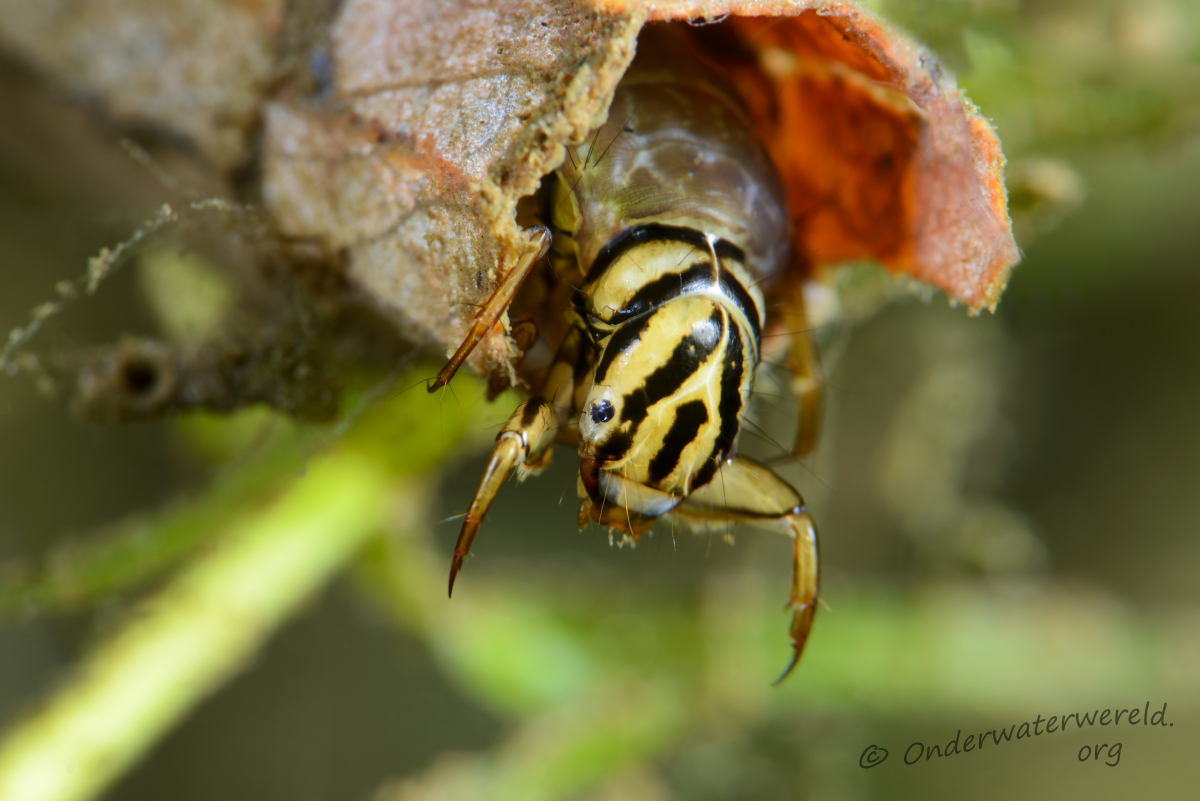

In het zoete water zwemmen enkele vissoorten rond met familiebanden in het zoute water. Als we de rivierdonderpad bekijken dan valt meteen op dat ze erg veel lijken of de donderpadden in het zoute water. Dat kan kloppen want beide soorten horen thuis bij de schorpioenvisachtigen en zijn daarom familie van elkaar.
Ook uit hun gedrag blijkt dat ze familie zijn, ze paaien in de winter of het vroege voorjaar en de eitjes zien er precies hetzelfde uit. Beide soorten liggen meestal rustig op de bodem alhoewel de rivierdonderpad zich overdag verbergt. De zeedonderpadden zijn ook overdag te vinden. Ook de marmergrondel die veelvuldig voorkomt in de Boschmolenplas komt in brak water voor. Alhoewel er uiterlijk geen verschil is zijn het toch twee verschillende soorten. Hier zit een foutje in de Nederlandse naamgeving. De zoutwatersoort heet officieel Proterorhinus marmoratus en zou dus marmergrondel moeten heten. De zoetwatersoort heet officieel Proterorhinus semilunaris en zou halve maan grondel kunnen heten. Beide soorten gaan tegenwoordig door het leven als marmergrondel maar het zijn wel verschillende soorten. Het driedoornig stekelbaarsje is ook een verhaal apart. In Nederland bestaat er een soort, Gasterosteus aculeatus maar er zijn verschillende vormen. Een trekkende soort, een zoutwatersoort en een zoetwatersoort. Het zal duidelijk zijn dat de stekelbaarsjes in de Boschmolenplas gaan kant op kunnen en hier geboren worden en ook weer sterven. Een echte zoetwater vorm van het stekelbaarsje.
Tekst en foto’s Silvia Waajen
There are some fish species in fresh water that have family ties in salt water. If we look at the fresh water bullhead it’s immediately clear that they look very similar to the salt water bullhead. This can be correct because they both belong to the order Scorpeaniformis and that’s why they are family. Also in their behaviour it’s clear that they are family, they spawn in wintertime or early spring and the eggs look exactly the same. Both species lay at ease on the bottom although the fresh water bullhead hides at daytime. You can find the salt water bullhead also at daytime. The tube nose goby that’s abundant in the Boschmolenplas also occurs in brackish water. Although they look exactly the same, they are different species. There is a mistake in the popular name. The salt water species is Proterorhinus marmoratus and would be the tube nose goby. The fresh water species is called  Proterorhinus semilunaris and could be named half moon goby. Both species go by the name tube nose goby but are different species. The three spined stickleback is also a story on its own. In the Netherlands there is one species, Gasterosteus aculeatus but there are different forms. One migrating species, a salt water species and a fresh water species. It will be clear that the sticklebacks in the Boschmolenplas have no way to go. They are born here and will die here. A true form of the fresh water stickleback.
Zorgeloos duiken en snorkelen begint bij Scuba Adventures Europe. Wij helpen jou de onderwaterwereld te ontdekken met een duikuitrusting die naadloos aansluit op jouw wensen en behoeften.
In onze online en offline duikwinkels vind je als duiker alle benodigdheden om van iedere duik een onvergetelijke ervaring te maken.